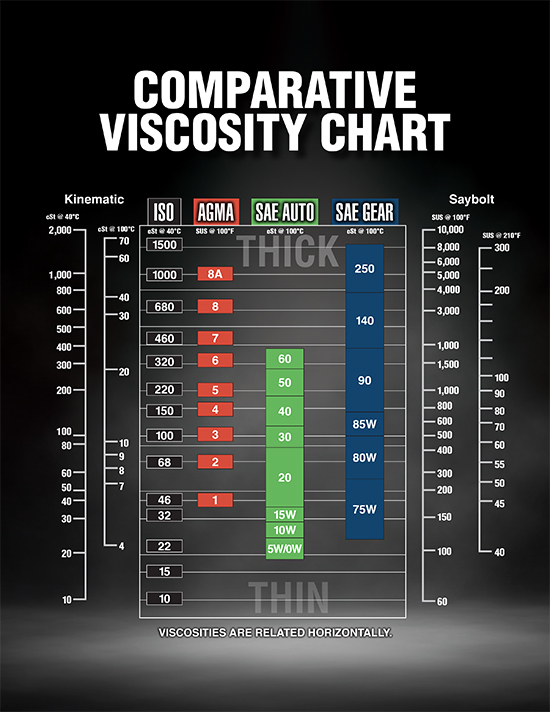How to Read a Gear Oil Viscosity Chart
Save this chart for your own use. As an AMSOIL dealer I use it several times weekly to show customers how things like a 20W-50 motor oil (motorcycle oil) can be also used as a gear lube.. Also how ranges of one oil is significant as a 90WT for differentials..
This comparative viscosity chart can help determine if two or more lubricants have similar viscosities.
by Joel Youngman|January 6, 2022
Viscosity, defined as a fluid’s resistance to flow, is one of the most important characteristics of a lubricant. Some of the informal terms used to describe the viscosity of a relatively free-flowing fluid, such as water, include thin, light and low. Terms such as thick, heavy or high suggest a fluid with strong resistance to flow, such as honey. However, these terms are general and difficult to measure.
More specific classifications give us a better idea of how fluids move, but you’ve likely seen at least a few different ways to designate viscosity:
Society of Automotive Engineers (SAE) grades for automotive motor oils (e.g. SAE 5W-30)
Society of Automotive Engineers (SAE) grades for automotive gear oils (e.g. SAE 75W-90)
American Gear Manufacturers Association (AGMA) grades for industrial gear lubricants (e.g. AGMA 5)
International Standards Organization (ISO) grades for hydraulic fluids and industrial gear lubricants. Established to represent a universally accepted grading system (e.g. ISO 100)
Comparative Gear Oil Viscosity Chart
Considering there are multiple standards (that use different scales) for designating viscosity, a comparative viscosity chart can help determine if two or more lubricants have similar viscosities. But how do you read a gear oil viscosity chart?
Just read it horizontally. For example, an SAE 60 motor oil has a similar viscosity to an SAE 90 gear oil, an AGMA 6 gear lubricant and an ISO 320 hydraulic fluid/gear lubricant. The corresponding kinematic viscosity and Saybolt viscosity are also referenced on the chart.
Kinematic Viscosity
Commonly seen on a lubricant’s data sheet, kinematic viscosity describes a fluid’s visible tendency to flow. Think of this as the time it takes to watch a fluid pour out of a container.
This tendency to flow is expressed in units suggesting the volume of flow over time, called centistokes (cSt). Kinematic viscosity is usually tested at both 40°C and 100°C.
Saybolt Viscosity
Although centistokes are the most common unit of measurement when determining kinematic viscosity, results may also be reported in Saybolt Universal Seconds (SUS). Viscosity reported in SUS is becoming increasingly rare, but you may still come across it when reading lubricant product information. Saybolt viscosity is usually tested at both 100°F and 210°F.


